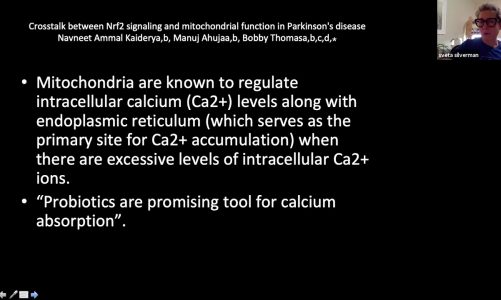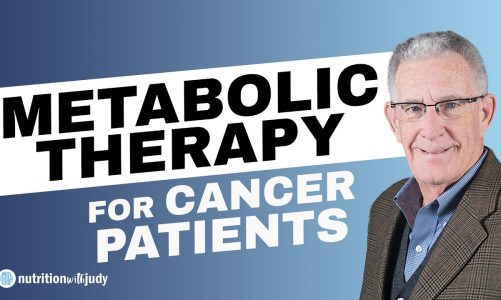In this “Ask Me Anything” (AMA) episode, Peter answers questions related to the leading cause of death in both men and women—atherosclerotic cardiovascular disease (ASCVD). He highlights the most important risk factors for ASCVD, such as apoB, LDL, hyperinsulinemia, and Lp(a), and explains the mechanism by which they confer risk and how these factors are interrelated. Peter also dives deep into the data around apoB to try to answer the question of how much residual risk is conferred for ASCVD through metabolic dysfunction once you correct for apoB. He also looks at the data around lifetime risk reduction of ASCVD in the context of low apoB.
If you’re not a subscriber and listening on a podcast player, you’ll only be able to hear a preview of the AMA. If you’re a subscriber, you can now listen to this full episode on your private RSS feed or our website at the AMA #43 show notes page. If you are not a subscriber, you can learn more about the subscriber benefits here.
We discuss:
- A racecar analogy for understanding atherosclerotic cardiovascular disease [2:00];
- Defining and differentiating apoB and LDL-C [10:00];
- The interrelated nature of insulin levels, apoB, triglycerides, and ASCVD parameters [13:00];
- Another way that hyperinsulinemia plays a role in endothelial dysfunction [18:00];
- Why Peter uses the oral glucose tolerance test (OGTT) with all patients [20:15];
- Is there any evidence that hyperinsulinemia is an independent contributor to ASCVD? [23:00];
- Thinking through risk in the context of high-fat diets resulting in improved metabolic metrics but with an elevation of apoB/LDL-C [27:30];
- Thinking through risk in the context of low apoB but higher than normal triglyceride levels [32:15];
- The importance of lowering apoB for reducing ASCVD risk [38:15];
- Data on men and women with familial hypercholesterolemia that demonstrates the direct impact of high apoB and LDL-C on ASCVD risk [47:45];
- Importance of starting prevention early, calcium scores, and explaining causality [52:30];
- Defining Lp(a), its impact on ASCVD risk, and what you should know if you have high Lp(a) [56:30];
- Lp(a) and ethnic differences in risk [1:00:30];
- Why someone with elevated Lp(a) should consider being more aggressive with apoB lowering strategies [1:05:00];
- Addressing the common feeling of hesitancy to taking a pharmacologic approach to lower ASCVD risk [1:07:15];
- Peter’s take on the 2022 Formula 1 season and thoughts on 2023 [1:15:15]; and
- More.
§
A racecar analogy for understanding atherosclerotic cardiovascular disease [2:00]
Previous episodes on this topic:
***
What’s more of less known:
- apoB can increase risk
- Lp(a) can increase risk
- Insulin, not good for ASCVD
But the open questions include things like:
- How can these risk factors collectively influence the risk of someone?
- And how to think through hypotheticals such as:
- What if my apoB is low, but my Lp(a) is high?
- What if my insulin is good, but my LDL or apoB is raised?
Racecar analogy:
- Imagine your lifespan is the length of time it takes you to drive a race car from point A to point B, where point B is driving it off a cliff
- You have two pedals: the accelerator and the brake pedal
- Your feet are always on both pedals, so it’s really just a question of how hard are you pressing on each one
- In this analogy, there’s never a point when the car is not moving towards the edge of the cliff, but you can do things that really speed up the drive, which means you’re moving towards death more quickly
- That would mean you’re pressing much more on the throttle than you are on the brake
- Conversely, you could have minimal pressure on the throttle and much more pressure on the brake and really slow your forward progress.
- Then the questions become:
- What are the factors that you could be doing that accelerate the drive towards the cliff?
- What are the things that you can be doing that slow that trajectory?
- That said, some things aren’t under you control like Lp(a)
- Lp(a) is just a low level of maintenance throttle that is put on the pedal
- So somebody who’s born with a low Lp(a) has a very low throttle application
- Someone who’s born with a high Lp(a) would have a higher throttle application.
- we would just call this baseline maintenance throttle.
- High apoB is also an accelerator, but you can apply the “brake” by lowering it
- You can lower apoB with dietary changes (slight push on brake)
- Or you can lower it with the application of pharmacotherapy (hard push on brake)
- The more you’re lowering apoB, the harder you’re pushing on the brake
- If a person has, for example, type 2 diabetes that is generally accompanied by hyperinsulinemia
- what is hyperinsulinemia doing in this equation? It is pressing harder on the throttle
- It is accelerating through mechanisms like upregulation of APOC3 expression, which regulates apoB in the wrong direction
- So more APOC3 means more apoB impacts the LDL receptor, the LDL receptor related protein. It moves all of these things in the wrong direction
- Other examples of accelerators:
- Smoking
- High blood pressure
- So what are the big three things that are driving ASCVD?
- Smoking,
- hypertension,
- apoB.
- Then, of course, you have other things, like Lp(a), hyperinsulinemia
“That would be my analogy, which is we have a car that we can’t actually stop, but we can really slow it down to a dull roar. That’s going to be through some combination of manipulating the brake and the throttle.” —Peter Attia
One thing to add to this analogy:
- If you’re 100 feet from the end of the cliff (i.e., you’re an older person) and you’re traveling fast, you better get ready to lock up the brakes.
- If you have a mile between you and the cliff, you can be a lot more judicious in your use of the brake pedal
⇒ AMA #34 stresses the importance of starting preventative strategies early in life
Defining and differentiating apoB and LDL-C [10:00]
ApoB and LDL-C
- oftentimes these are in concordance, sometimes they’re in discordance
- Peter always prefer to know apoB
- Oftentimes, people don’t know their apoB and they only have their LDL-C, which can be a predictor as well
{end of show notes preview}

